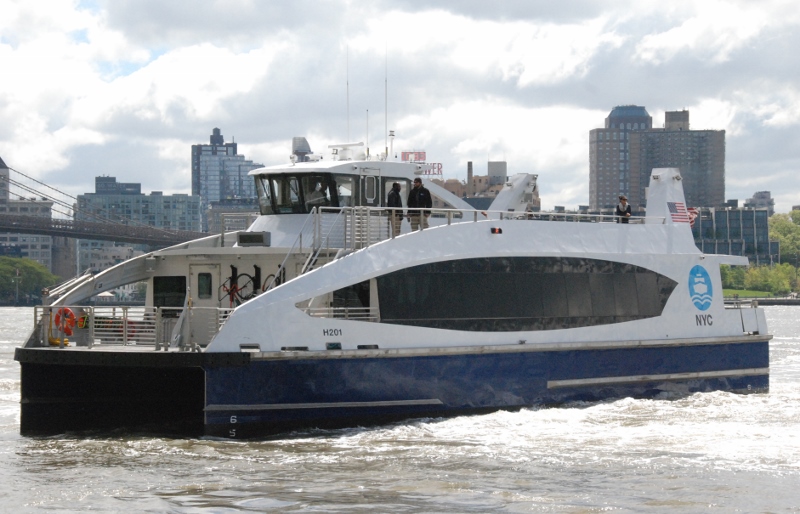New York City’s NYC Ferry public system, with Hornblower operating a fleet of more than two dozen boats serving terminals in three outer boroughs and Manhattan (the city’s business center), has been an amazing success, right? Well, it depends on who you ask.
In late summer, NYC Ferry's owner, the city’s Economic Development Corporation (EDC), conducted a survey which included questions on the demographics of the system's ridership. The results, which seemed to imply that its riders were more affluent than, say, the average rider on its subways, provided terrific fodder for social activists and do-gooders (some real, some imagined) who prowl the city’s transit corridors. With some 18,000 riders on the average weekday commute paying $2.75 per ride (pegged to the cost of a trip on the city’s signal-challenged subways and traffic-snarled buses), the issues raised by critics, which include aspiring candidates in the city's mayoral election in two years, is mostly about subsidies.
With current passenger counts, the cost of providing each ferry ride is around $13. This implies a subsidy of about $10 a ride. For comparison, New York City’s Staten Island Ferry (linking Staten Island with Lower Manhattan), which is free to riders, costs the taxpayers a little over $5 per ride. Additionally, commuter rail in the region is subsidized to the tune of $7 to $8 per ride. EDC officials explain that the ferry is not meant to compete with the subway, but augment existing transit alternatives by linking hard-to-reach waterfront neighborhoods with the central business areas in Manhattan.
Getting beyond the actual numbers, blogger Benjamin Kabak, a transit activist behind the “2nd Avenue Sagas” blog (with a prolific Twitter feed), invoked the class struggle, writing: “ …we can comfortably say Bill de Blasio (New York’s mayor and a ferry proponent) is subsidizing a luxury travel option for relatively few people who tend to be wealthier." The Kabak blogged further that “now that we’ve finally received an official glimpse of the demographics of ferry riders, we can now say definitively New York City should stop spending hundreds of millions of dollars of taxpayer money heavily subsidizing a luxury, niche, low-capacity transit option that largely attracts New Yorkers wealthier than city average and wealthier than those who rely on any other mode of transit.”
There are other views, dealing more with practicalities and cost effectiveness. Nicole Gelinas, a senior fellow at the Manhattan Institute, a conservative leaning think tank, suggested that an existing program subsidizing subway and bus transport for low income New Yorkers might be bundled with the ferry rides. She also prodded survey authors to include questions, in the future, on modal choice. Would the ferry rides be replacing trips that otherwise would be taken in automobiles (owned or ride share services like Uber) she posited?
Removal of automobile traffic is increasingly a goal for policymakers in New York City, which will soon implement congestion pricing on motor vehicle movements. Price elasticity is also on the minds of conservatives. Put simply, might the ferry service in fact support higher fares?




